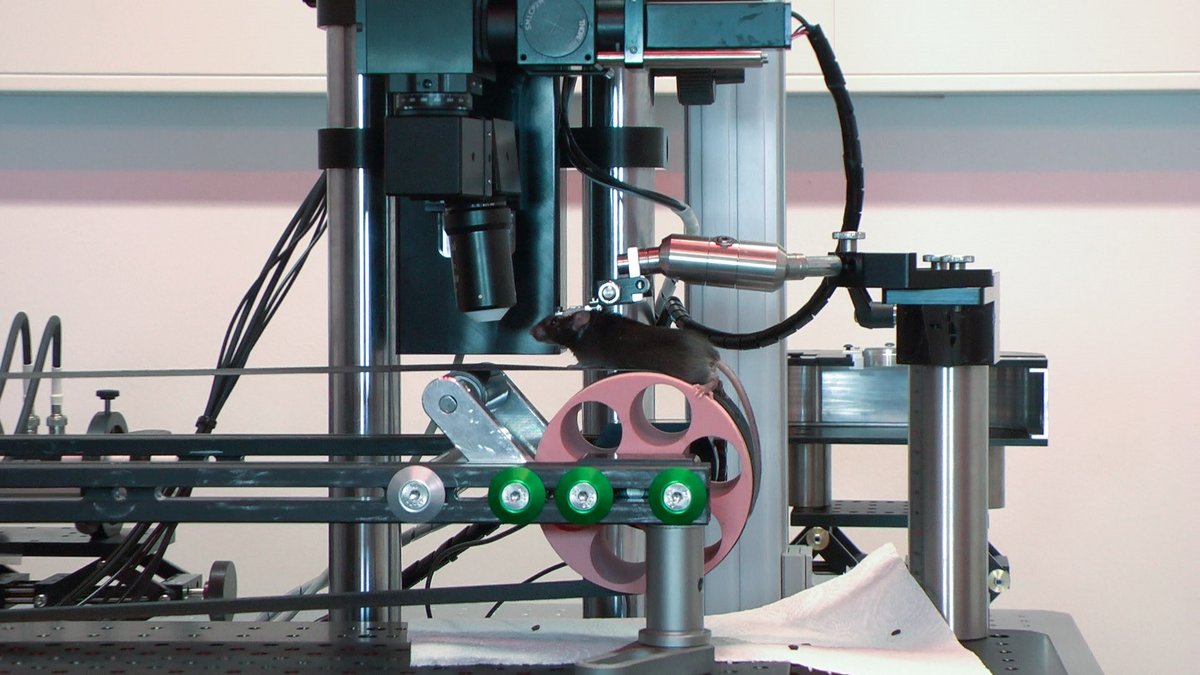Behavioral Imaging
With the Core Unit "Behavioral imaging", we want to contribute to a better understanding of disease-related changes in synaptic signal processing in neuronal networks during behavior in humans and animals. Even the smallest deviations in the processing of synaptic signals can lead to pathologically altered activity patterns of neurons and their networks.
Specifically, we aim to accurately record behavior through sleep studies, multidimensional operant learning, spatial navigation, and treadmill systems with multi-camera monitoring, and in parallel measure neuronal activity in freely moving rodents.
By linking the new Core Unit "Behavioral Imaging" with our existing Core Unit "Combinatorial Neuroimaging" (CNI), it will now be possible to analyze neuronal network activity at single-cell resolution of thousands of interacting neurons in addition to established imaging, and to accurately record behavior using multidimensional imaging and artificial intelligence-based annotation of behavioral modules.
Combination of behavioral research and imaging
We bring together data on brain structure (for example, through human imaging) and on the function of neuronal networks (for example, through single-cell population activity in animal models) in order to understand the development of memory or even of cognitive dysfunctions causally and in terms of mechanism. Only in this way can we transfer our findings from animal models to humans. The novelty is the integration of behavioral research and cellular imaging, which were previously used rather separately.
These new approaches generate large amounts of complex and storage-intensive lmaging data, which pose a challenge for Big Data handling and can be handled in our new Core Unit.
The new Core Unit "Behavioral Imaging" is funded by the European Union and integrates already existing scientific infrastructure of LIN. Due to the complexity and the associated integration efforts, the setup was done in two phases starting in fall 2019.
First, we procured three complementary 2-photon microscopy systems, which allow us to systematically observe and analyze selected neurons in the brain. Then, we set up the behavioral test course and the electrophysiological measurement apparatus for the mice. Now the Core Unit is operational and is led by the renowned 2-photon expert Dr. Hongbo Jia.



